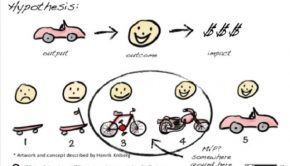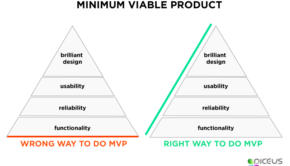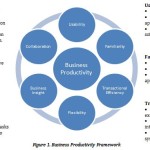Reasons to Build an MVP Before Raising Funds for Your Startup
Producing a ‘minimum viable product’ is a startup strategy whereby you develop the core aspects of your idea and have something that works, holding off more advanced features until later when the market has started to respond.
Your ultimate vision may be much bigger, but you release just enough to enter the market and build momentum.
Some founders take this route before seeking the bulk of their startup funding. If you’re developing a product, here are 6 reasons why you might do the same.
1) Proof of Concept
Getting funding for a new project is never easy. You could be the greatest pitchman alive and a lot of investors would still need more convincing.
Developing an MVP is proof that you’re not just coming up with a ‘pie in the sky’ idea and can actually get the job done.
Investors can get a hands-on demonstration, and depending on how far you take it there may also be proof of customer demand and sales.
You are much more likely to secure funding with an MVP because your idea is already working. So you can look through POC examples in order to fundraise easier.
The catch-22 with this approach is that you still need some funding to build an MVP, but if you can ‘bootstrap’ to this stage, securing the rest of the funds should be easier.
If you’re struggling with initial MVP funding, you might consider an online emergency loan service like ElcLoans to bridge the gap until you can get investors on board.
2) Build Customer Relationships

Demand is obviously a key part of all startups. If people don’t want your product then you’re not going to succeed.
Building an MVP allows you to test the market and make relationships with early adopters.
If you can show that people are interested because they are already buying your product, then investors are sure to come on board. You also have revenue coming in to re-invest in developing the project further.
Perhaps the most important benefit of releasing something early is that you get feedback from customers that can help you take the product down the right path.
3) Reduces Rework
Nobody’s idea is ever 100% perfect and if you overbuild before releasing something, you run the risk of having to go back to the drawing board because it isn’t received in the way you’d hoped.
Releasing a minimum viable product means you can shape future releases around what the consumers want instead of having to completely rework it because you got it wrong.
This will also save money in the long run.
The MVP approach is very common in the software/app community because you can easily develop a product and put it out on the web to gauge the response. This is essentially how Dropbox started.
Tonnes of people flocked to the service and signed up and the concept was validated. The service is vastly more advanced than it was in the beginning, but it was still viable.
4) Know How Much Funding You’ll Need
Without some kind of prototype, it can be very hard to determine how much funding you will actually need for your startup. You could overestimate, risking being turned down by investors or being in a position where you can’t give them the return they expected, or you could underestimate and stifle development and growth.
Having a product already out in the market allows you to forecast sales, gather feedback to shape the development of the next release, and overall better understand what money you need.
5) Test Your Marketing Approach

A minimum viable product lets you test all areas of the business, including your marketing approach, while still being small enough that you won’t cripple the business. It’s better to iron out the so-called bugs now than after you have investors on board and released an advanced product.
One approach is to ramp up your marketing and go as far as possible with the MVP until growth starts to drop. Then it’s time to start adding more features and getting more funding.
6) Don’t Waste Your Efforts
Ultimately, building an MVP is about being smart and cautious—testing the product and market, before putting your ideas into full-swing. This way you aren’t wasting time and money and don’t have to backtrack.
If you have enough funding to approach your startup in this manner, then there’s really no reason not to.
MVP Examples
There are many examples of MVP success—some even did it by accident. Take Airbnb as an example:
Founders Brian Chesky and Joe Gebbia couldn’t afford their rent, so they decided to offer their apartments on the cheap to participants of their hometown conference.
They built a basic website with some photos and interest was high.
The crude site was a far cry from the advanced platform we see today, but it was a minimum viable product that demonstrated the idea.
Have you developed a minimum viable product before acquiring the bulk of your startup funding? Or perhaps you overbuilt and wished you’d have followed the MVP approach. Let us know your experiences in the comments below!
















